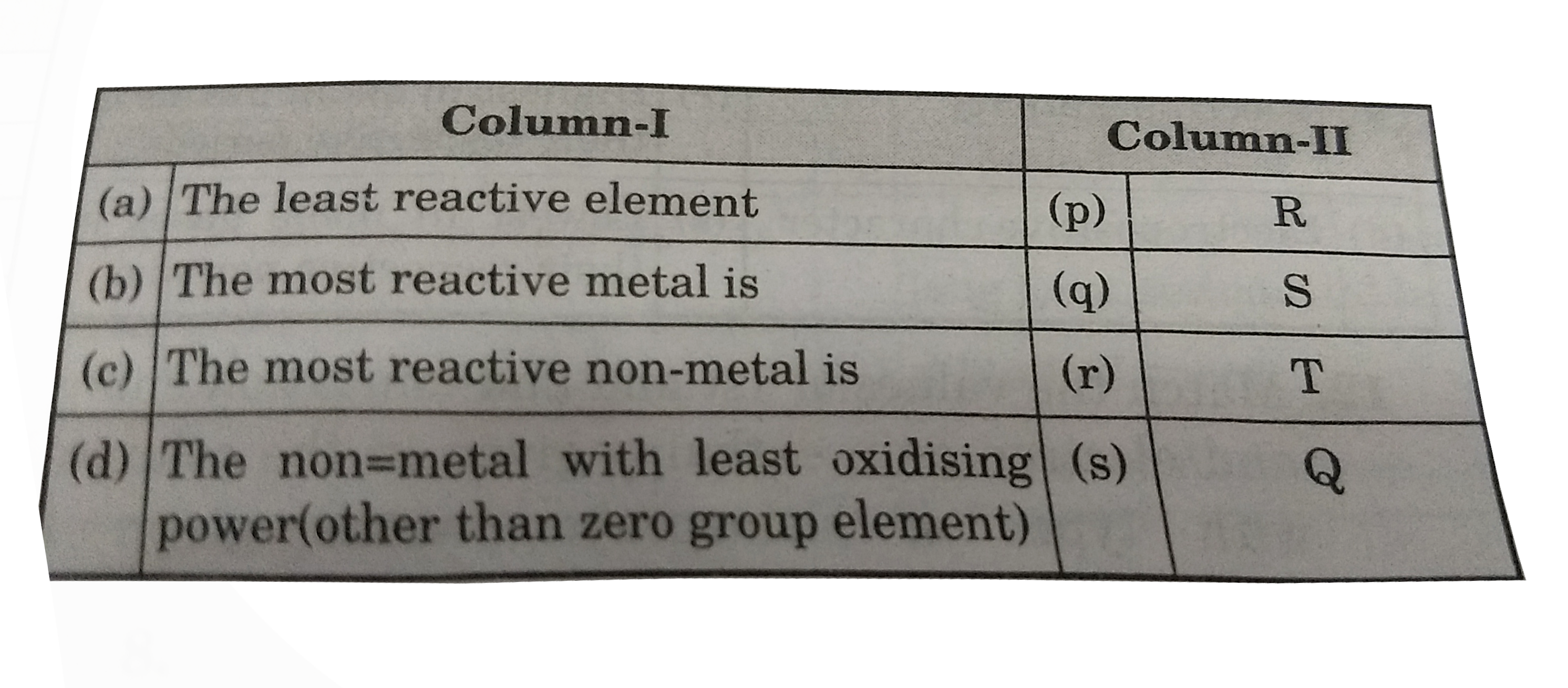The second electron gain enthalpies (in kJ mol−1) of oxygen and sulphur respectively are:
–780, +590
–590, +780
+590, +780
+780, +590
The correct Answer is:D
To determine the second electron gain enthalpies of oxygen and sulfur, we need to understand the concept of electron gain enthalpy and how it varies between different elements.
1. Understanding Electron Gain Enthalpy:
- Electron gain enthalpy is defined as the change in energy when an electron is added to a neutral atom to form a negative ion.
- The first electron gain enthalpy is usually negative because energy is released when an electron is added to a neutral atom.
2. First Electron Gain for Oxygen and Sulfur:
- When an electron is added to oxygen (O), it forms O⁻ (oxide ion).
- When another electron is added to O⁻, it forms O²⁻.
- For sulfur (S), adding an electron forms S⁻ (sulfide ion), and adding another electron forms S²⁻.
3. Analyzing the Second Electron Gain Enthalpy:
- The second electron gain enthalpy refers to the energy change when a second electron is added to the already negatively charged ion (O⁻ or S⁻).
- For oxygen, the addition of a second electron to O⁻ (to form O²⁻) experiences significant electron-electron repulsion due to the small size of the oxygen atom. This results in a positive electron gain enthalpy.
- For sulfur, the addition of a second electron to S⁻ (to form S²⁻) encounters less repulsion because sulfur is larger in size compared to oxygen. Thus, the second electron gain enthalpy for sulfur is less positive than that of oxygen.
4. Values of Second Electron Gain Enthalpy:
- The second electron gain enthalpy of oxygen (O) is approximately +780 kJ/mol.
- The second electron gain enthalpy of sulfur (S) is approximately +590 kJ/mol.
5. Conclusion:
- Therefore, the second electron gain enthalpies of oxygen and sulfur respectively are:
- Oxygen: +780 kJ/mol
- Sulfur: +590 kJ/mol
Final Answer:
The second electron gain enthalpies of oxygen and sulfur are +780 kJ/mol and +590 kJ/mol, respectively.
---
- Electron gain enthalpy is defined as the change in energy when an electron is added to a neutral atom to form a negative ion.
- The first electron gain enthalpy is usually negative because energy is released when an electron is added to a neutral atom.
- When an electron is added to oxygen (O), it forms O⁻ (oxide ion).
- When another electron is added to O⁻, it forms O²⁻.
- For sulfur (S), adding an electron forms S⁻ (sulfide ion), and adding another electron forms S²⁻.
- The second electron gain enthalpy refers to the energy change when a second electron is added to the already negatively charged ion (O⁻ or S⁻).
- For oxygen, the addition of a second electron to O⁻ (to form O²⁻) experiences significant electron-electron repulsion due to the small size of the oxygen atom. This results in a positive electron gain enthalpy.
- For sulfur, the addition of a second electron to S⁻ (to form S²⁻) encounters less repulsion because sulfur is larger in size compared to oxygen. Thus, the second electron gain enthalpy for sulfur is less positive than that of oxygen.
- The second electron gain enthalpy of oxygen (O) is approximately +780 kJ/mol.
- The second electron gain enthalpy of sulfur (S) is approximately +590 kJ/mol.
- Therefore, the second electron gain enthalpies of oxygen and sulfur respectively are:
- Oxygen: +780 kJ/mol
- Sulfur: +590 kJ/mol
The second electron gain enthalpies of oxygen and sulfur are +780 kJ/mol and +590 kJ/mol, respectively.
Topper's Solved these Questions
- CLASSIFICATION OF ELEMENTS AND PERIODICITY IN PROPERTIES Book:VMC MODULES ENGLISHChapter:CLASSIFICATION OF ELEMENTS AND PERIODICITY IN PROPERTIES Exercise:LEVEL -2 Numerical Value Type for JEE Main
Explore 13 Videos
- CLASSIFICATION OF ELEMENTS AND PERIODICITY IN PROPERTIES Book:VMC MODULES ENGLISHChapter:CLASSIFICATION OF ELEMENTS AND PERIODICITY IN PROPERTIES Exercise:JEE MAIN (ARCHIVE)
Explore 13 Videos
- CLASSIFICATION OF ELEMENTS AND PERIODICITY IN PROPERTIES Book:VMC MODULES ENGLISHChapter:CLASSIFICATION OF ELEMENTS AND PERIODICITY IN PROPERTIES Exercise:LEVEL -1
Explore 75 Videos
- CHEMICAL THERMODYNAMICS Book:VMC MODULES ENGLISHChapter:CHEMICAL THERMODYNAMICS Exercise:IN - CHAPTER EXERCISE - L
Explore 10 Videos
- ELECTROCHEMISTRYBook:VMC MODULES ENGLISHChapter:ELECTROCHEMISTRYExercise:IMPECCABLE
Explore 50 Videos
Similar Questions
Electron Gain Enthalpy
View SolutionThe correct order of electron gain enthalpy (in kJ/mole) is
View SolutionThe electron gain enthalpy (in kJ/mole) of Oxygen, Sulphur,Selenium and Tellurium respectively are :
View SolutionThe electron gain enthalpy (in kJ/mole) of F, O, N and C respectively are :
View SolutionThe first (ΔH1) and second (ΔH2) ionisation enthalpies (in kJmol−1) and the (ΔHeg) electron gain enthalpy (in kJmol−1) of a elements are given below:

Based on the above information match the following columns.

View SolutionThe first (Δi,H1) and the second (Δ,H2) ionisation enthalpies (in kJ mol−1 ) and the (ΔegH) electron gain enthalpy (in kJ mol−1 ) of a few elements are given below :

Which of the above elements is likely to be :
a reactive metal
View SolutionThe electron gain enthalpy ( in kJ//mol ) of fluorine, chlorine, bromine and iodine, respectively ,are :
View SolutionElectron gain enthalpy will be positive in
View SolutionThe first (Δi,H1) and the second (Δ,H2) ionisation enthalpies (in kJ mol−1 ) and the (ΔegH) electron gain enthalpy (in kJ mol−1 ) of a few elements are given below :

Which of the above elements is likely to be :
the least reactive element?
View SolutionThe electron gain enthalpy of oxygen is …………………. than that of sulphur.
View Solution